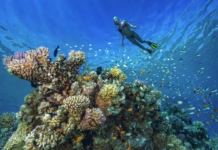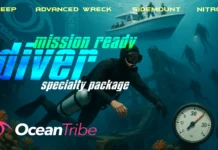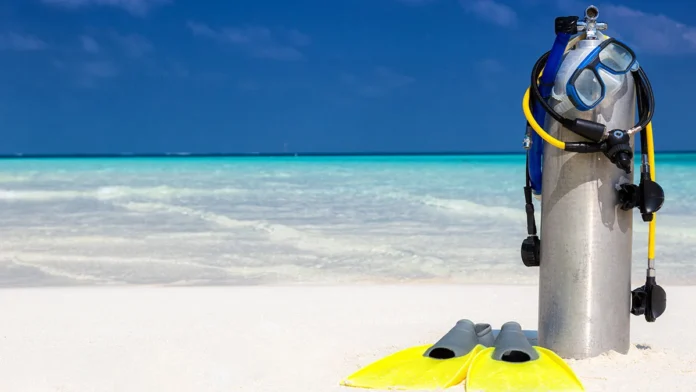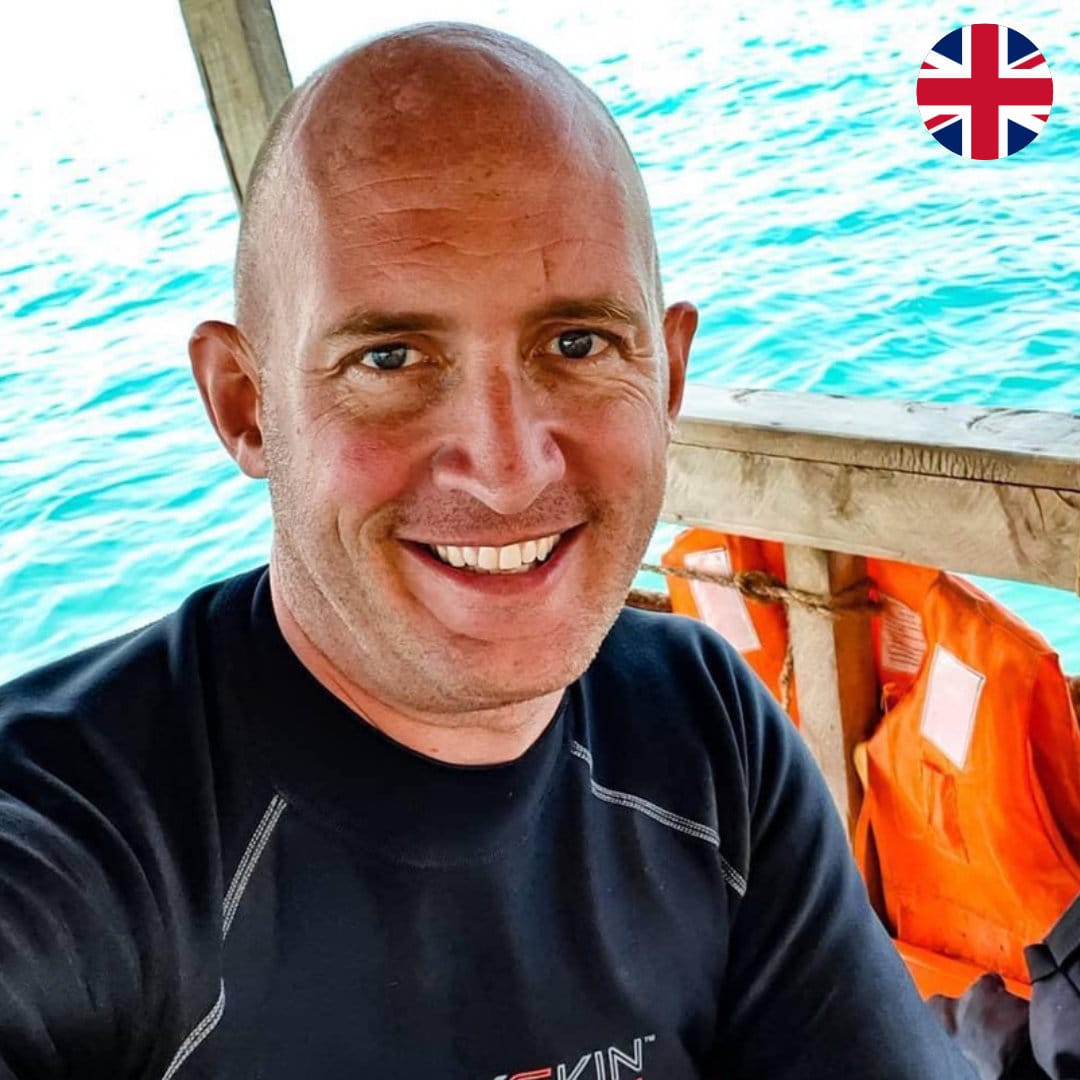Scuba diving can be life-changing for anyone — especially for people with disabilities. With proper training and support, the underwater world becomes more accessible than ever. This article explores the SSI Classified Diver Program, a scuba training path designed for divers with physical, sensory, or cognitive challenges. We’ll explain how it works, the different classification levels, who it’s for, and how it compares to similar programs like PADI’s Adaptive Techniques and the Handicapped Scuba Association (HSA). You’ll also get insights from Ocean Tribe, a dive center in Diani Beach, Kenya, led by a paraplegic instructor. Let’s dive in and discover why scuba diving empowers disabled individuals — and how you can get started.
What Is the SSI Classified Diver Program?
The SSI Classified Diver Program helps people with disabilities learn scuba diving safely. Developed by Scuba Schools International (SSI), this program uses adaptive techniques to match each diver’s needs. It teaches essential scuba skills while accommodating various physical or sensory limitations. Updated in 2020, the program has grown in popularity and effectiveness.
Unlike creating a separate course, SSI adapts the standard Open Water Diver course. Instructors adjust techniques and allow assistance where needed. For example, a diver with limited leg use might focus on arm propulsion. A trained assistant can help with gear setup or water entries. The student completes theory sessions, confined water skills, and open water dives — just like any diver, but at their own pace and ability.
Every Classified Diver dives with support. Their certification card shows their required assistance level. This ensures safety while promoting independence. SSI encourages forming inclusive dive teams. It’s not just about an individual and their instructor. It’s about building dive communities where all divers feel welcome.
Understanding the Levels in the SSI Classified Diver Program
After training, divers are certified at Level 1, 2, or 3. Each level reflects how much assistance they need. Here’s a quick breakdown:
- Level 1 – Most independent. The diver needs just one Classified Dive Buddy.
- Level 2 – The diver needs a team of two trained buddies.
- Level 3 – Requires two buddies plus a trained Classified dive professional (like an instructor).
Each diver’s card shows their level. This helps dive operators plan the right team setup. Importantly, these levels are based on water skills — not land-based diagnoses. Two people with the same disability may be at different levels, depending on their in-water ability.
SSI encourages progress. A Level 3 diver may improve over time and move to Level 2. The program builds confidence and celebrates every achievement.
Who Can Join the Program?
The program welcomes anyone with a disability — physical, sensory, or cognitive — as long as they have medical clearance to dive. Here’s who can benefit:
- Mobility impairments: Paraplegics, amputees, and those with spinal injuries can dive using adaptive gear and techniques.
- Sensory impairments: Blind or deaf divers use touch, visual cues, and modified signals to dive confidently.
- Neurological conditions: Conditions like cerebral palsy, MS, or Parkinson’s can be accommodated with personalized instruction.
- Cognitive/developmental disorders: Students with autism, Down syndrome, or brain injuries benefit from patient, repetitive instruction tailored to their learning style.
This program doesn’t label people by what they can’t do. It focuses on what’s possible under water.
How SSI Classified Diver Program Compares to PADI and HSA
SSI isn’t the only organization offering adaptive diving. Let’s compare:
- PADI Adaptive Techniques: PADI doesn’t offer a separate certification for disabled divers. Instead, instructors adapt standard training for each student. They use creative techniques to help students meet regular performance requirements. PADI also offers an Adaptive Support Diver course to train buddies. This approach emphasizes inclusion but doesn’t issue special certification cards.
- HSA (Handicapped Scuba Association): HSA is an independent body that certifies disabled divers using a three-tier system (Levels A, B, C). Their levels mirror SSI’s 1–3. HSA also trains instructors and dive buddies specifically for adaptive diving. The main difference? HSA operates outside the major agencies, while SSI integrates the program into its core system.
- SSI Classified Diver: SSI combines the structure of HSA with the accessibility of a major agency. The classification card clearly shows the diver’s support needs. Any SSI dive center with qualified instructors can offer this training, making it more widely available.
Real-World Impact: Ocean Tribe’s Experience
Ocean Tribe, based in Diani Beach, Kenya, leads by example. The center is run by Mark Slingo, the world’s only paraplegic SSI Instructor Trainer and PADI Course Director. After a life-changing accident in 2005, Mark returned to the ocean and built a career training divers and professionals. He shows firsthand that disability is not inability.
At Ocean Tribe, all instructors are trained in adaptive diving. They include SSI Classified Instructor training in their pro programs. This builds a culture where inclusion is the norm, not an exception. During Adaptive Diving Week in 2024, Ocean Tribe hosted discover scuba sessions for disabled participants and led instructor training events.
Seeing an instructor in a wheelchair leading dives sends a powerful message. Students feel seen, supported, and inspired. Many describe scuba diving as their first experience of true freedom — moving effortlessly in all directions, beyond the limits of wheelchairs or crutches.
Ocean Tribe proves that inclusive diving works. They’ve trained adaptive divers and even paraplegic instructors. Their mixed training environments — where disabled and non-disabled students learn side by side — make the dive community stronger and more empathetic.
How Diving Empowers Disabled People
Underwater, gravity disappears. This changes everything. Wheelchair users can glide through reefs, float with fish, and explore wrecks. Diving builds strength, improves coordination, and reduces spasms. It’s even therapeutic for conditions like cerebral palsy and chronic pain.
Mentally, diving calms the mind. Deep breathing and underwater focus reduce anxiety and promote mindfulness. Many adaptive divers report improved mood, confidence, and self-worth. It’s also deeply social. Divers become part of a global community — one that values adventure, teamwork, and inclusivity.
Diving reminds you what’s possible. It shifts the focus from limitation to ability. For many, it becomes a life-changing hobby or even a career.
Getting Started: A Quick Guide
- Get Medical Clearance: Complete the SSI medical form. A dive doctor or general physician needs to confirm you’re fit to dive. Be open and honest about your health.
- Find a Dive Center: Look for SSI Classified Centers or instructors trained in adaptive techniques. Contact them, share your needs, and ask how they support adaptive divers. A good center will listen and adapt.
- Check Gear Options: Most divers use standard gear with minor modifications. Your instructor will help you customize your setup. Webbed gloves, alternate fin styles, or buddy assistance can help.
- Train at Your Pace: You’ll start in a pool or calm water. Practice skills, build comfort, and take your time. Once ready, you’ll do open water dives to complete certification.
- Join the Dive Community: After certification, stay involved. Go on dive trips. Connect with other divers. Take more courses. Be proud of your achievement and inspire others.
Final Thoughts
Scuba diving is for everyone. With the SSI Classified Diver Program and inclusive dive centers like Ocean Tribe, the ocean is now open to all. If you’ve ever dreamed of diving — no matter your ability — take the first step. The underwater world doesn’t care how you enter. It welcomes you for who you are: a diver.
Let your journey begin. The water is waiting.
























